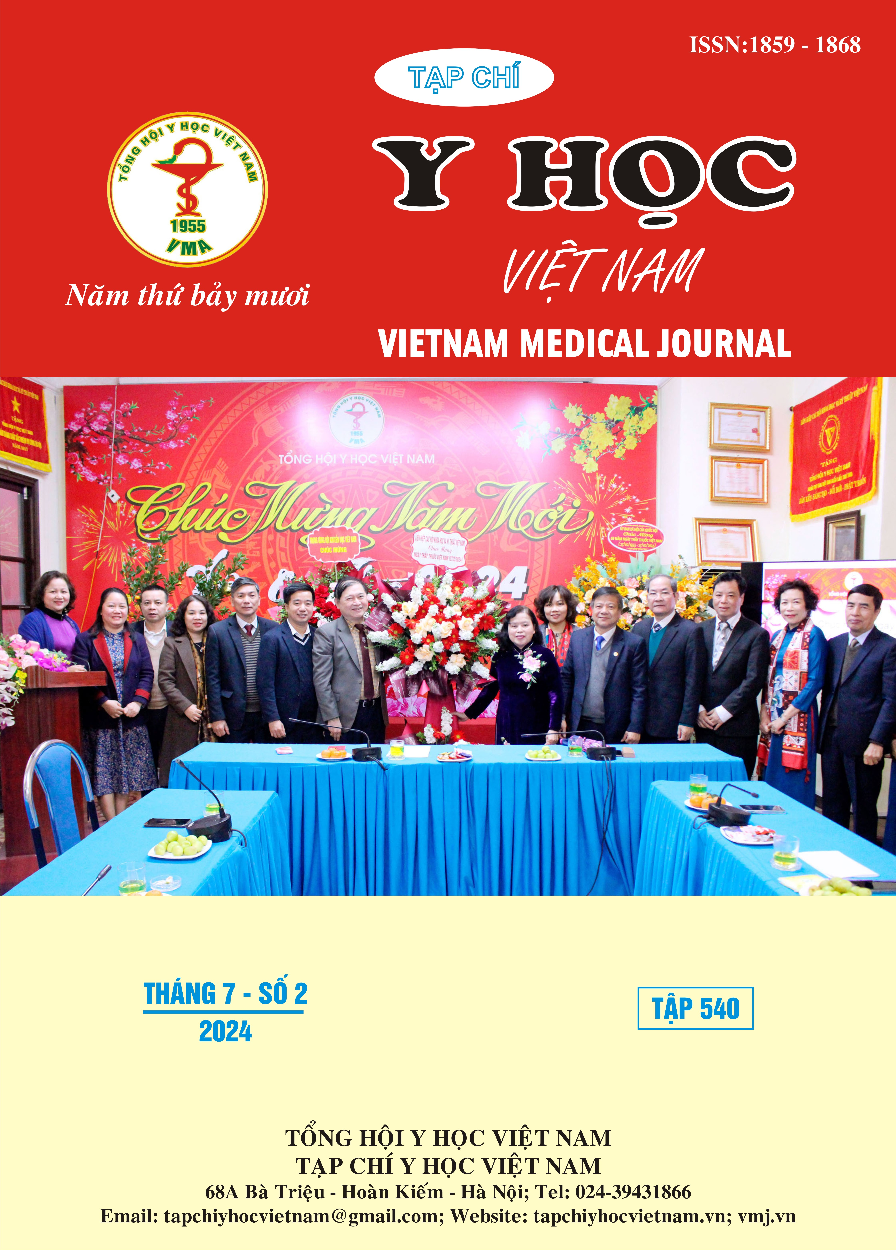CLINICAL CHARACTERISTICS, CRANIAL MAGNETIC RESONANCE IMAGING, ELECTROENCEPHALOGRAPHY IN PEDIATRIC ENCEPHALITIS PATIENTS AT QUANG NGAI HOSPITAL FOR CHILDREN AND WOMEN
Main Article Content
Abstract
Introduction: Encephalitis is an inflammation of the brain parenchyma. The disease progresses seriously, with a high rate of death and sequelae. Diagnostic Imaging is important to the diagnosis and prognosis of neurological diseases nowadays. Among them, Electroencephalography and Cranial Magnetic Resonance Imaging are the two most effective techniques in encephalitis. Objective: Describe clinical characteristics, cranial magnetic resonance imaging and electroencephalography in encephalitis in children. Subject and Method: A cross-sectional description of encephalitis in pediatric patients from 2 months old to 15 years old treated at Quang Ngai Hospital for Children and Women between January 2022 and November 2023. Result: There were 50 pediatric encephalitis patients. There were 38.0% of pediatric patients with encephalitis lesions on cranial magnetic resonance imaging and 58.0% of pediatric patients with abnormalities on electroencephalography. Conclusion: It is necessary to combine the clinical and para-clinical characteristics in the diagnosis and treatment of encephalitis. Especially, cranial magnetic resonance imaging and electroencephalography test in pediatric patients with behavioural disorders, headaches of unknown cause, focal seizures, seizures many times per day, seizures lasting more than 10 minutes.
Article Details
Keywords
pediatric encephalitis, cranial magnetic resonance imaging, electroencephalography
References
2. Đỗ Thanh Hương, Nguyễn Thị Bích Vân, Cao Vũ Hùng (2022), "Đặc Điểm Lâm Sàng, Cận Lâm Sàng Viêm Não Kháng Thụ Thể N-Methyl-D-Aspartate (NMDA) Sau Viêm Não Herpes Simplex Ở Trẻ Em", Tạp chí nghiên cứu y học. 156(8), tr. 51-57.
3. Trần Thị Thu Hương (2019), Nghiên cứu căn nguyên, đặc điểm dịch tễ học, lâm sàng, cận lâm sàng và yếu tố tiên lượng bệnh viêm não cấp ở trẻ em Việt Nam, Luận án tiến sỹ Y học, Trường Đại học Y Hà Nội.
4. Britton P.N., Dale R.C., Blyth C.C., et al (2020), "Causes and Clinical Features of Childhood Encephalitis: A Multicenter, Prospective Cohort Study", Clinical Infectious Diseases. 70(12), pp. 2517-2526.
5. Gold J.J., Crawford J.R., Glaser C., et al (2014), "The role of continuous electroencephalography in childhood encephalitis", Pediatric Neurology.
6. Mohammad S.S., Soe S.S., Pillai S.C., et al (2016), "Etiological associations and outcome predictors of acute electroencephalography in childhood encephalitis", Clinical Neurophysiology. 127(10), pp. 3217-3224.
7. Shen J, Lin D, Jiang T., et al (2022), "Clinical characteristics and associated factors of pediatric acute disseminated encephalomyelitis patients with MOG antibodies: a retrospective study in Hangzhou, China", BMC neurology. 22(1), p. 418.
8. Venkatesan A., Tunkel A.R., Bloch K.C., et al. (2013), "Case Definitions, Diagnostic Algorithms, and Priorities in Encephalitis: Consensus Statement of the International Encephalitis Consortium", Clinical Infectious Diseases. 57(8), pp. 1114–1128.


